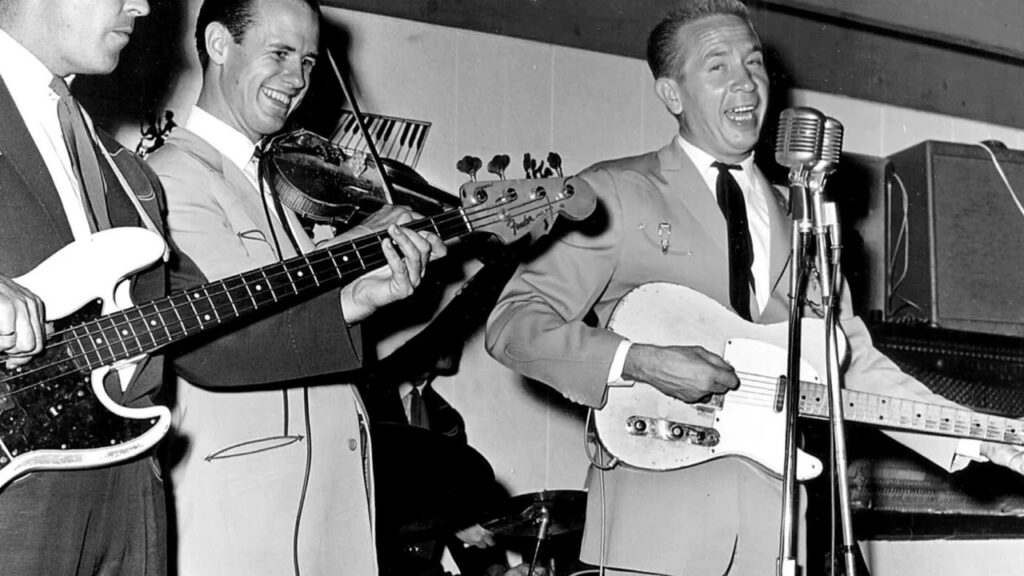
A Lonesome Heart Echoes in the Empty Spaces Where Love Once Lived
When Buck Owens released “How Long Will My Baby Be Gone” in 1968, the song swiftly claimed the top spot on the Billboard Hot Country Singles chart, further cementing his reign as a dominant force in the Bakersfield sound—a raw, electrified counterpoint to Nashville’s smoother countrypolitan polish. Featured on the 1968 album Sweet Rosie Jones, the track stands as both a commercial triumph and an aching portrait of emotional desolation, distilled through Owens’ distinct brand of honky-tonk melancholy.
Owens was no stranger to heartache ballads, but “How Long Will My Baby Be Gone” reverberates with a particular kind of vulnerability that belies its concise runtime. The song’s premise is heartbreakingly simple: a man waits in uncertainty, tormented by the question that serves as its title. But within this minimalist framing lies a complex tapestry of unresolved sorrow and emotional paralysis. Here, Owens isn’t demanding reconciliation; he isn’t even railing against betrayal. Instead, he’s caught in limbo—a soul suspended between memory and hope, rendered powerless by absence.
The song’s structure is lean and purposeful, reflecting the economic poetics that defined so much of Owens’ output during his imperial phase. Against a twang-laden backdrop propelled by Don Rich’s unmistakable Telecaster licks, Owens delivers his lines with stoic resignation rather than theatrical despair. That restraint—his refusal to embellish or overstate—intensifies the emotional weight. Each repetition of the central question becomes more haunting, not because it reveals new information, but because it underscores the silence left in love’s wake.
Musically, “How Long Will My Baby Be Gone” exemplifies what made the Bakersfield sound such a revolutionary force in country music during the 1960s. Eschewing string sections and background choruses for driving rhythms and electric instrumentation, Owens crafted songs that felt grounded in working-class reality—songs for honky-tonks and truck stops, not ballrooms. And yet, within that gritty aesthetic lies a deep sensitivity. The song’s melody is deceptively buoyant, almost jaunty, creating a tension between sound and sentiment that reflects the dissonance at its core: life goes on even as love stalls.
In many ways, this track captures Buck Owens at his most elemental—simultaneously rugged and tender, emotionally direct yet sonically intricate. It’s not just about longing; it’s about endurance. The question isn’t just how long she’ll be gone—it’s how long he can bear her absence. And therein lies its enduring power: a three-minute meditation on time, memory, and the slow ache of not knowing whether love will return or simply become another ghost in the jukebox.
Through songs like this one, Buck Owens didn’t just chart hits—he chronicled the inner lives of those left behind.